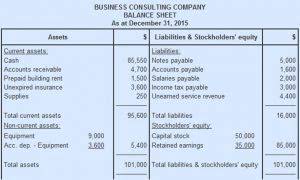
For example, an agricultural researcher could use ANOVA to determine if there are significant differences in the yields of several varieties of wheat under the same conditions. The psychologist wants to determine if there is a statistically significant difference in stress levels between these different types of exercise. Mean squares are the sum of squares divided by the respective degrees of freedom.
It is the sum of the squared differences between each observation and the overall mean. For instance, management might set a cost budget of 10 percent less than last quarter. Because variance analysis is such a powerful risk management tool, there is a strong case for including it in the finance portion of any MBA curriculum. Yet fewer than half of finance professors believe they define variance analysis should be teaching this subject; they view it as a topic more typically taught in accounting classes. At the same time, in practice, variance analysis is such a cross-functional tool that it could be taught throughout the business school curriculum—but it’s not. We perceive a worrisome disconnect between the way variance analysis is taught and the way it is used in real life.
Variance analysis definition
Neither the calculations of significance nor the estimated treatment effects can be taken at face value. “A significant interaction will often mask the significance of main effects.”[42] Graphical methods are recommended to enhance understanding. A lengthy discussion of interactions is available in Cox (1958).[43] Some interactions can be removed (by transformations) while others cannot. Quantity standards indicate how much labor (i.e., in hours) or materials (i.e., in kilograms) should be used in manufacturing a unit of a product. In contrast, cost standards indicate what the actual cost of the labor hour or material should be. Standards, in essence, are estimated prices or quantities that a company will incur.
- For instance, management might set a cost budget of 10 percent less than last quarter.
- In finance, if something like an investment has a greater variance, it may be interpreted as more risky or volatile.
- If you want to look at how different groups change across time, you can use a two-way repeated measures ANOVA.
- Cost variance has two elements that make up its formula; price and volume.
- This formula for the variance of the mean is used in the definition of the standard error of the sample mean, which is used in the central limit theorem.
- Price variance measures the difference between actual and budgeted revenue based on the difference between actual and budgeted sales price per unit.
- A researcher might, for example, test students from multiple colleges to see if students from one of the colleges consistently outperform students from the other colleges.
For example, a psychologist could use it to determine if there are significant differences in stress levels among individuals in different occupations. It is the sum of the squared differences between the group means and the grand mean, multiplied by the number of observations in each group. ANCOVA tests whether certain factors have an effect on the outcome variable after removing the variance for which quantitative covariates (interval variables) account. This allows the comparison of one variable outcome between groups, while statistically controlling for the effect of other continuous variables that are not of primary interest. ANOVA is based on comparing the variance (or variation) between the data samples to the variation within each particular sample.
Randomization-based analysis
If an infinite number of observations are generated using a distribution, then the sample variance calculated from that infinite set will match the value calculated using the distribution’s equation for variance. Variance has a central role in statistics, where some ideas that use it include descriptive statistics, statistical inference, hypothesis testing, goodness of fit, and Monte Carlo sampling. With a one-way, you have one independent variable affecting a dependent variable. For example, a two-way ANOVA allows a company to compare worker productivity based on two independent variables, such as salary and skill set.
